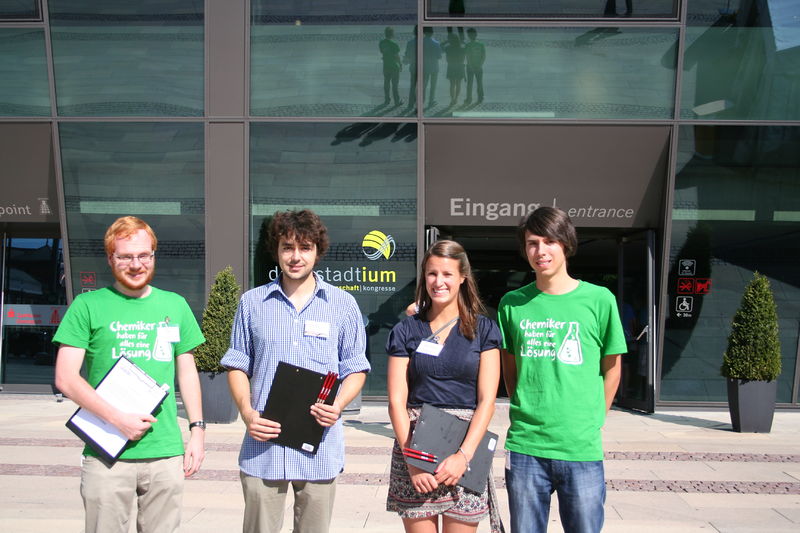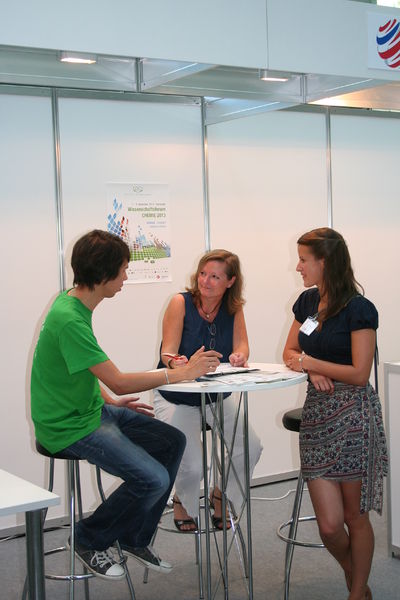Team:TU Darmstadt/humanpractice
From 2013.igem.org
| (6 intermediate revisions not shown) | |||
| Line 142: | Line 142: | ||
<a href="https://2013.igem.org/Team:TU_Darmstadt/humanpractice"> | <a href="https://2013.igem.org/Team:TU_Darmstadt/humanpractice"> | ||
| - | <img alt="team" src="/wiki/images/ | + | <img alt="team" src="/wiki/images/b/b3/08._Human_Practice_(angewählt).jpg" width="150" height="30"></a> |
<a href="https://2013.igem.org/Team:TU_Darmstadt/modelling"> | <a href="https://2013.igem.org/Team:TU_Darmstadt/modelling"> | ||
| Line 154: | Line 154: | ||
<br> | <br> | ||
| - | + | <br><br> | |
<br> | <br> | ||
| Line 181: | Line 181: | ||
<div> | <div> | ||
| + | <font size="3" color="#F0F8FF" face="Arial regular"> | ||
<p text-aligne:left style="margin-left:50px; margin-right:50px"> | <p text-aligne:left style="margin-left:50px; margin-right:50px"> | ||
| - | The goal of our iGEM-Project is to develop a <img src="/wiki/images/thumb/2/2a/Humanpractice_outdoor1.JPG/800px-Humanpractice_outdoor1.JPG" alt="human practice 1" style="float:right; margin:15px;" width="345.6" height="230.4"> | + | The goal of our iGEM-Project is to develop a <img src="/wiki/images/thumb/2/2a/Humanpractice_outdoor1.JPG/800px-Humanpractice_outdoor1.JPG" alt="human practice 1" style="float:right; margin:15px;" width="345.6" height="230.4"> method for using genetically modified organisms (GMO) to detect dangerous mycotoxins in foods, that everybody can operate easily. In order to achieve this goal it is very important that the people who would use our device trust in the technology they are using and do not have any concerns regarding safety or reliability issues. |
| + | <br> | ||
| + | <br> | ||
| + | These concerns can be very serious and grave, especially when the topics GMOs and food products come together. To improve our project we decided to evaluate the concerns <img src="/wiki/images/thumb/2/28/Humanpractice_indoor_vert1.JPG/400px-Humanpractice_indoor_vert1.JPG" alt="human practice 1" style="float:left; margin:15px;" width="230.4" height="345.6">the user might have with our detection method and try to incorporate their suggestions into the development of our device and strategy. | ||
| + | Our plan is to do this in a two-part public-opinion poll. With the first survey we want to gather the people`s attitude about biotechnology and GMOs in general and their views and concerns of our detection system in particular. After the gained information is integrated into the development process a second survey determines if the precautions and adjustments we incorporated are enough to maybe resolve some of the existing concerns and increase the chances of our project to reach it’s goal. | ||
<br> | <br> | ||
<br> | <br> | ||
| - | + | Our goal was to reach a large crowd of people differing in age, education, origin, gender and attitude towards genetic engineering. To ensure variability in our audience we addressed them in two different ways. On the one hand we published our questionnaire online via different social media and thereby addressed people anonymously. On the other hand we also approached the audience personally and asked them to participate in our survey. | |
| - | + | ||
<br> | <br> | ||
<br> | <br> | ||
| - | + | Therefore we visited the WiFo 2013. This is the annual meeting of the German Chemists Society GDCh, the biggest society of chemists in Germany. With thousands of visitors from the scientific world this was the ideal place to discuss our project and gather with people to share ideas. We were able to hand our questionnaire to a great variety of people, starting at pupils visiting the WiFo on pupil’s day, to scientists from similar fields as our project. We got great feedback on our ideas and questionnaire from everybody we talked to. We want to thank the people of GDCh for this great opportunity. | |
</div> | </div> | ||
Latest revision as of 01:00, 5 October 2013
Idea
The goal of our iGEM-Project is to develop a 
These concerns can be very serious and grave, especially when the topics GMOs and food products come together. To improve our project we decided to evaluate the concerns 
Our goal was to reach a large crowd of people differing in age, education, origin, gender and attitude towards genetic engineering. To ensure variability in our audience we addressed them in two different ways. On the one hand we published our questionnaire online via different social media and thereby addressed people anonymously. On the other hand we also approached the audience personally and asked them to participate in our survey.
Therefore we visited the WiFo 2013. This is the annual meeting of the German Chemists Society GDCh, the biggest society of chemists in Germany. With thousands of visitors from the scientific world this was the ideal place to discuss our project and gather with people to share ideas. We were able to hand our questionnaire to a great variety of people, starting at pupils visiting the WiFo on pupil’s day, to scientists from similar fields as our project. We got great feedback on our ideas and questionnaire from everybody we talked to. We want to thank the people of GDCh for this great opportunity.
 "
"